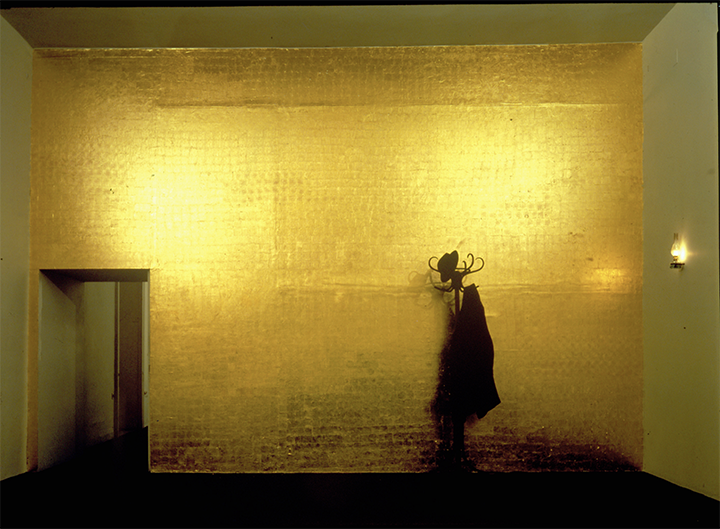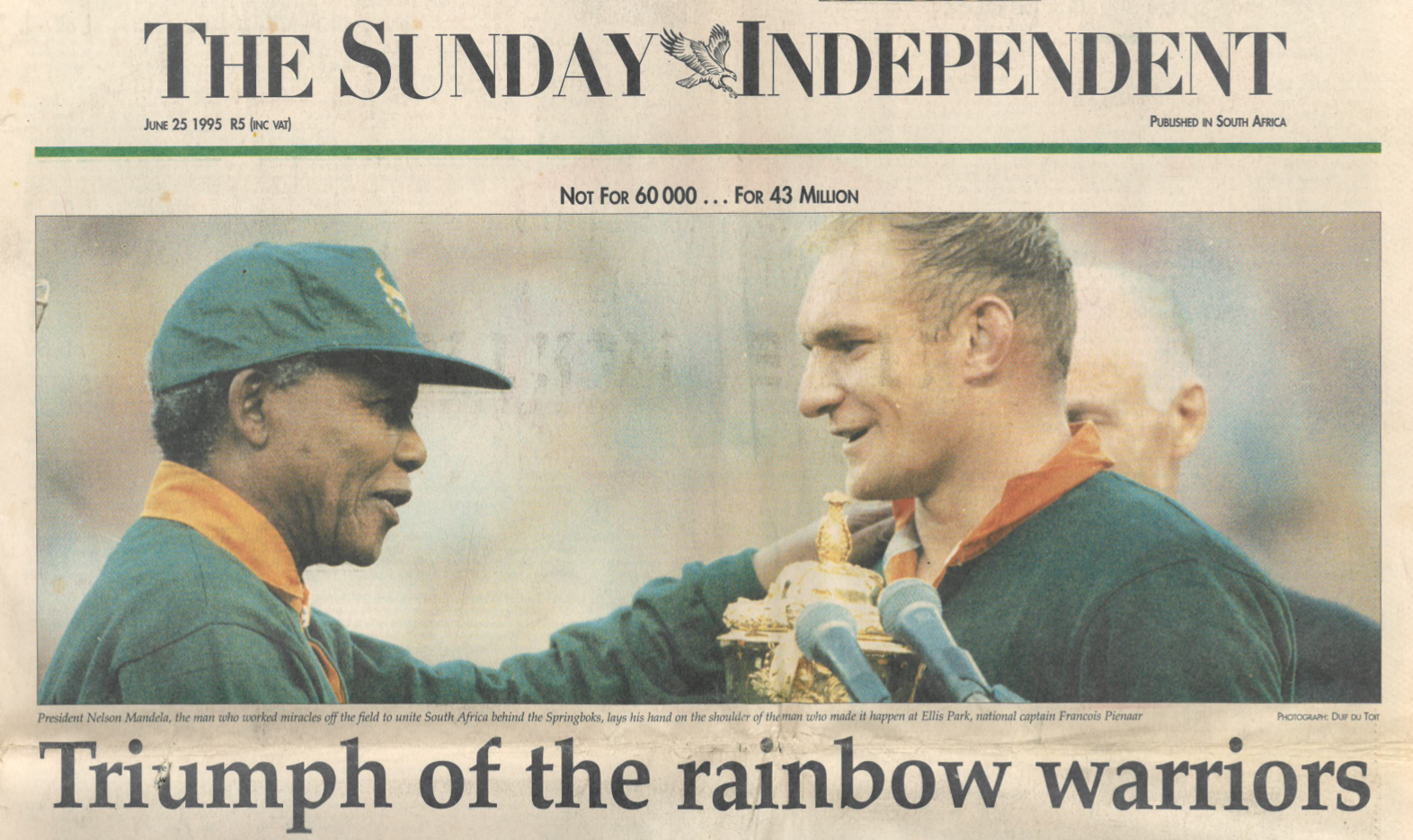2019
Chip packets, side table, brass bowl, Lay’s Lightly Salted chips, shelf, mobile phone, charger, plug
311 x 322 x 80cm
A remake of Jannis Kounellis’ Tragedia Civile (1975), drawing on the history of South African hero Francois Pienaar to reimagine the work in a contemporary South African context.
In Kounellis’ original, gold leaf lines the wall, recalling ‘the past golden age in contrast to the disordered and compromised present’ by invoking Byzantine art. In front of the wall is a coat rack with overcoat and hat – illustrating in its melancholy banality the limitations of the individual in relation to the demands of their environment, while an antiquated paraffin lamp on a shelf lights the scene.
Instead of Kounellis’ coat rack and gold leaf, a bowl of Lay’s Lightly Salted is placed on offer in front of a wall covered in flattened chip packets. On a shelf, a mobile phone is on charge, receiving an almost constant stream of news updates from numerous news channels and Twitter accounts, on an endless array of topics of competing urgency.
The title of the work is derived from the front page of The Sunday Independent, 25 June 1995, which features an image of Nelson Mandela handing Pienaar the Rugby World Cup trophy – an image that has become iconic in South Africa as a symbol of reconciliation and unity – accompanied by the headline ‘Triumph of the Rainbow Warriors’.
The chips make reference to the arrival of Lay’s in South Africa following end of Apartheid and the lifting of sanctions. Lay’s Lightly Salted came to represent a new global sophistication for middle class South Africans to aspire to, based on Western consumer culture, once again with Pienaar at the fore as the star of Lay’s advertising.
Excerpt of article by Matthew Freemantle, discussing Tragedy of the Rainbow Warriors:
‘Perhaps the crowning piece of the show is another remake, this time a riff on the 'Tragedia Civile' by Jannis Kounellis. Lawrence uses Lay’s crisp packets where Kounellis used gold leaf to festoon a wall signifying the accomplishments of the past. Lawrence replaces the original’s hook, hat and overcoat with a bowl of Lay’s lightly salted crisps lying on the table for consumption, while a mobile phone lies charging on the shelf instead of a paraffin lamp. This self-administering of communion, a modern offering of no substance in an age of cheap imitation and distraction, wonders at the depth of our dubious relationship with conveyors of meaning.
But accomplishment implies some measure of success and finality, and we know how Lawrence feels about those things. His title for the installation, Tragedy of the Rainbow Warriors, mashes up the original with a newspaper headline marking a supposedly seminal moment in recent South African history. Nelson Mandela, dressed in a Springbok jersey, hands captain Francois Pienaar the 1995 Rugby World Cup trophy. Here is a moment that aimed to tell us something had ended. But was this the end—or the beginning—of anything?
Clearly, Lawrence detects a kind of idiocy in viewing this or any moment as a conclusion or resolution. “We were supposed to feel like something had been solved. We were offered absolution from our sins, cheap closure in a flash. The truth was something a lot less certain.”
Lawrence doesn’t miss this opportunity for another witticism. Noting that we lay our crisps onto our tongues like communion wafers, he nominates a Western brand as our priest. As Apartheid ended and sanctions were lifted, we South Africans were rewarded with a deluge of attractive but empty gifts from the West. The Gods were good to us.’

‘Tragedia Civile’ by Jannis Kounellis, 1975

Front page of The Sunday Independent, 25 Jun. 1995




©2019 Dale Lawrence